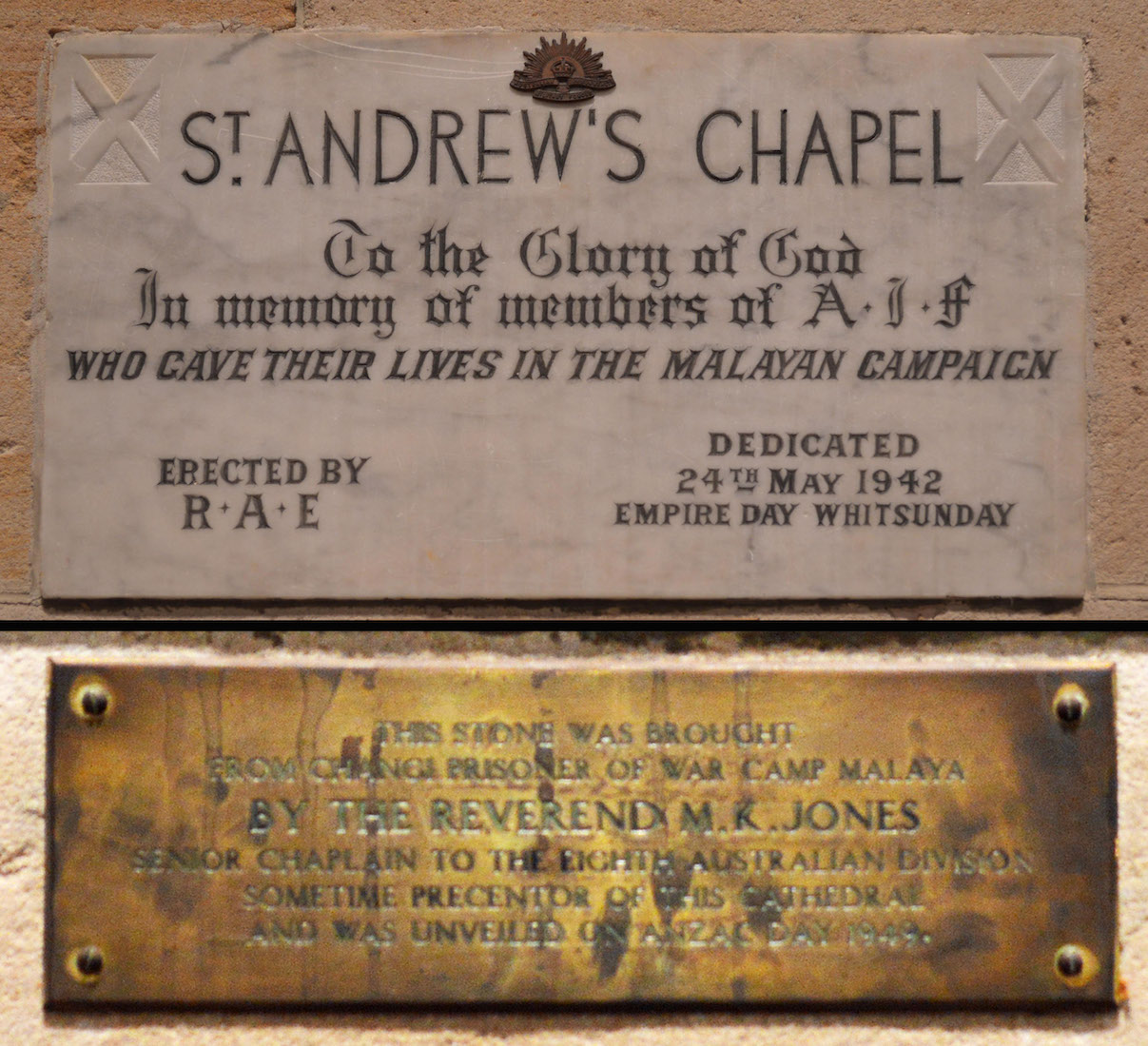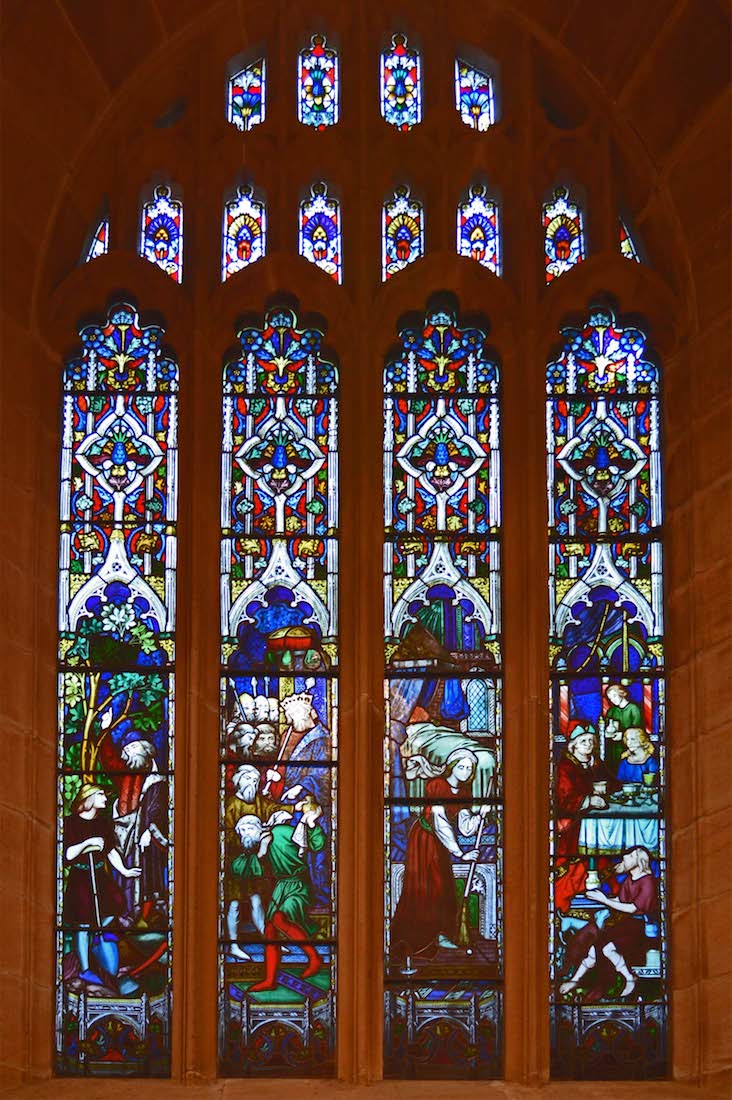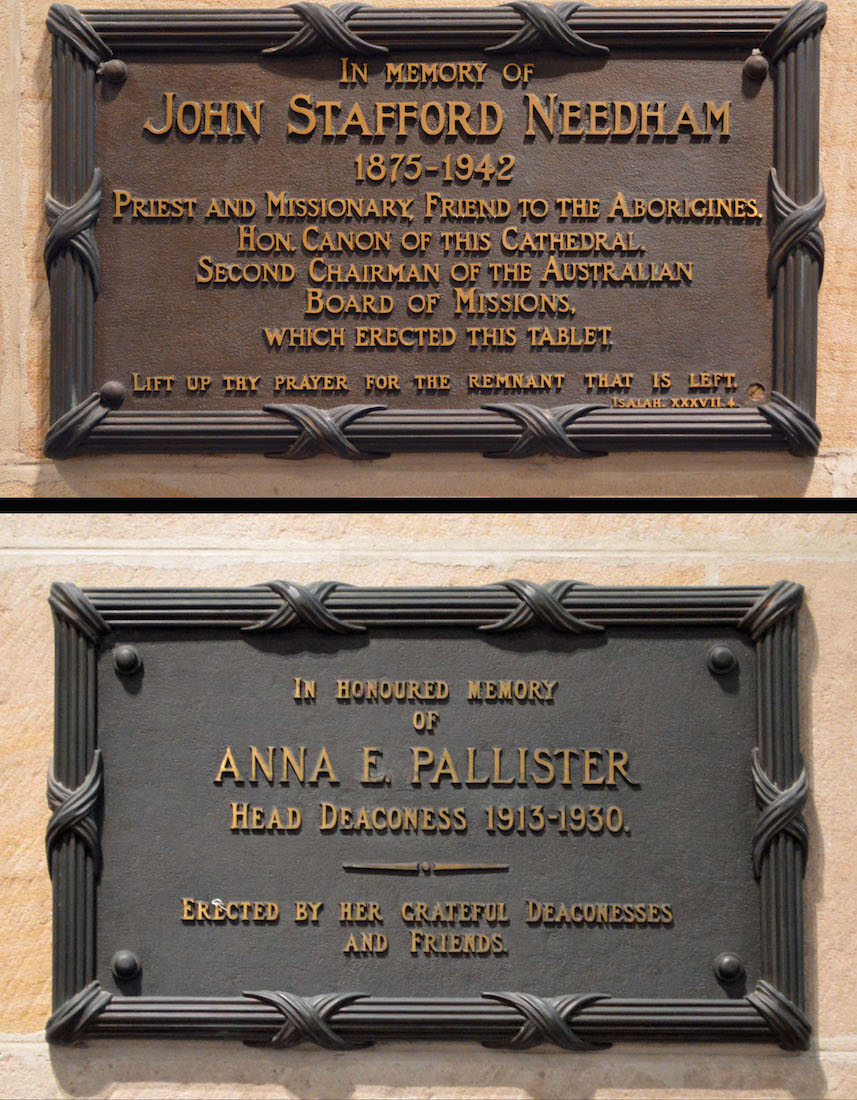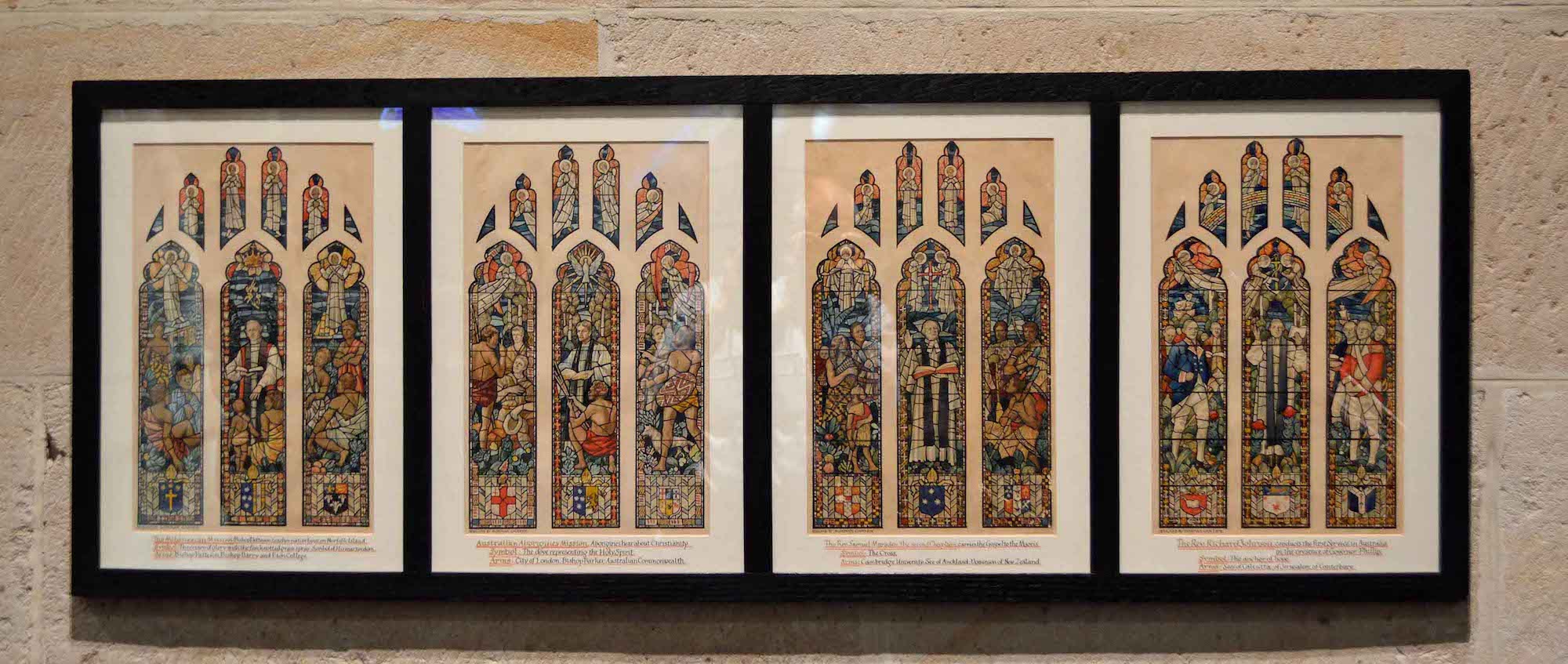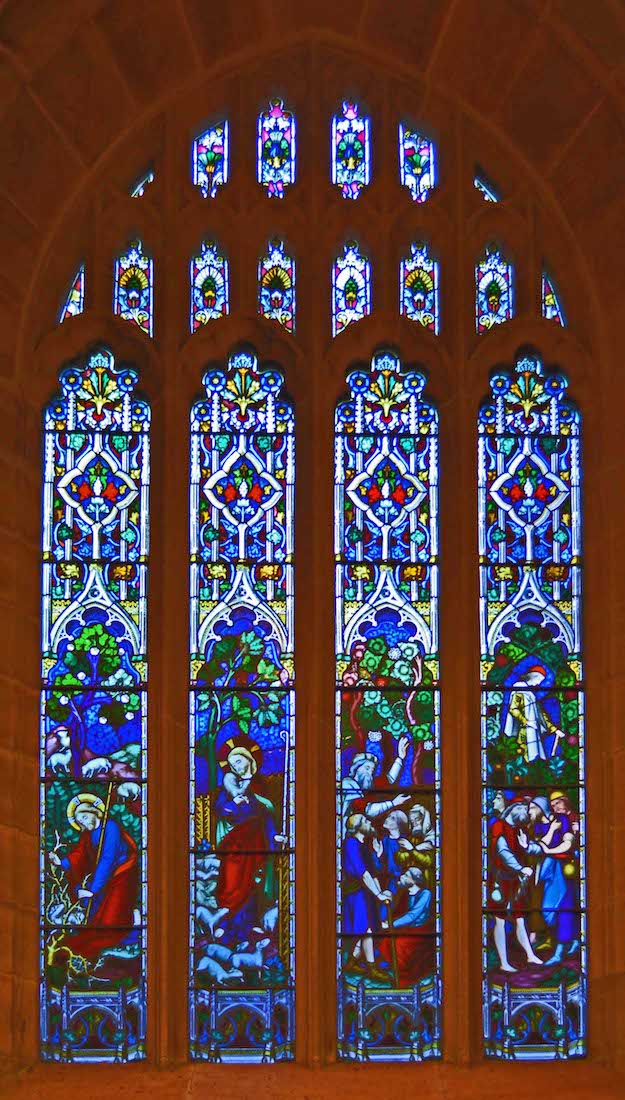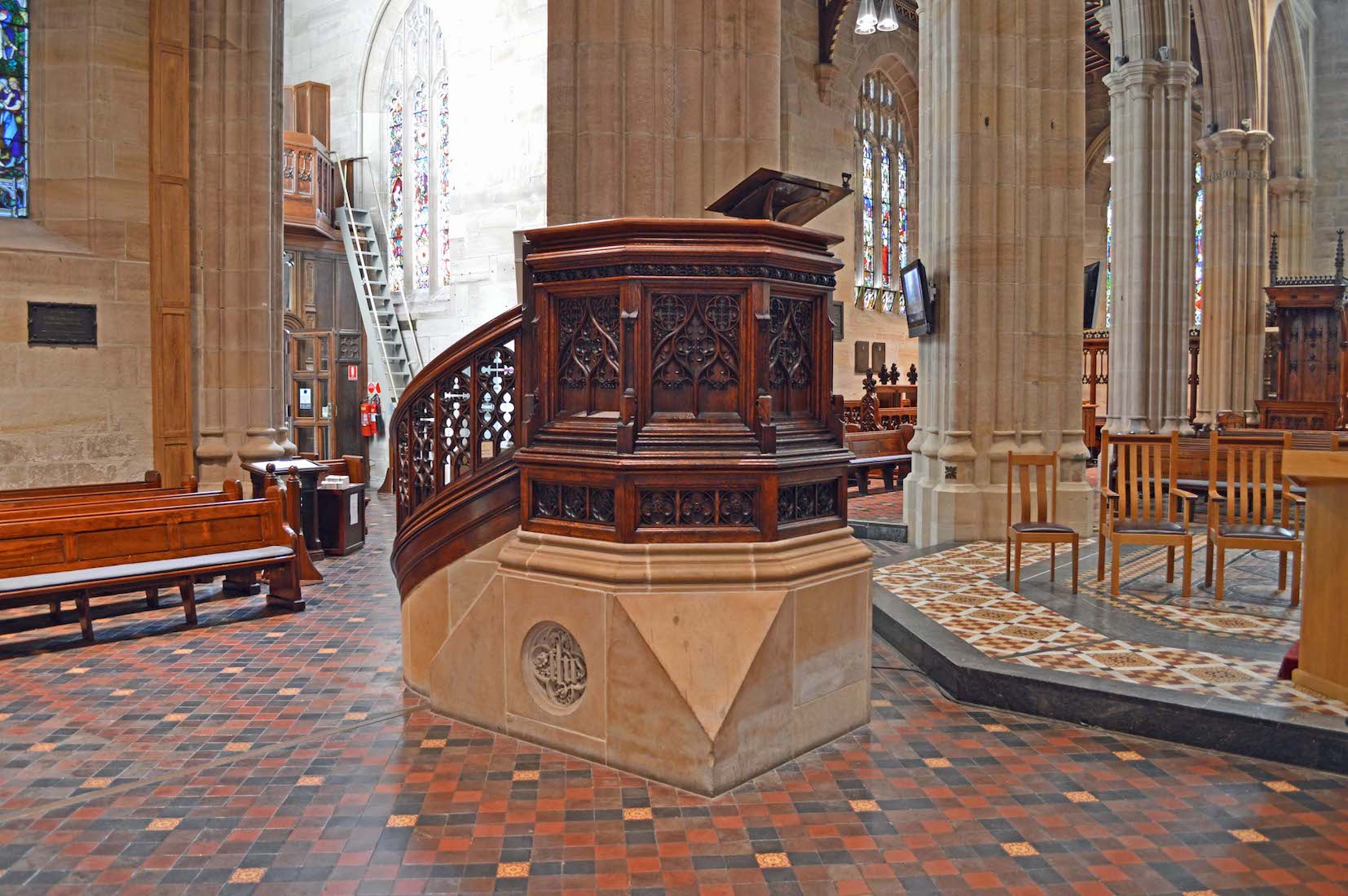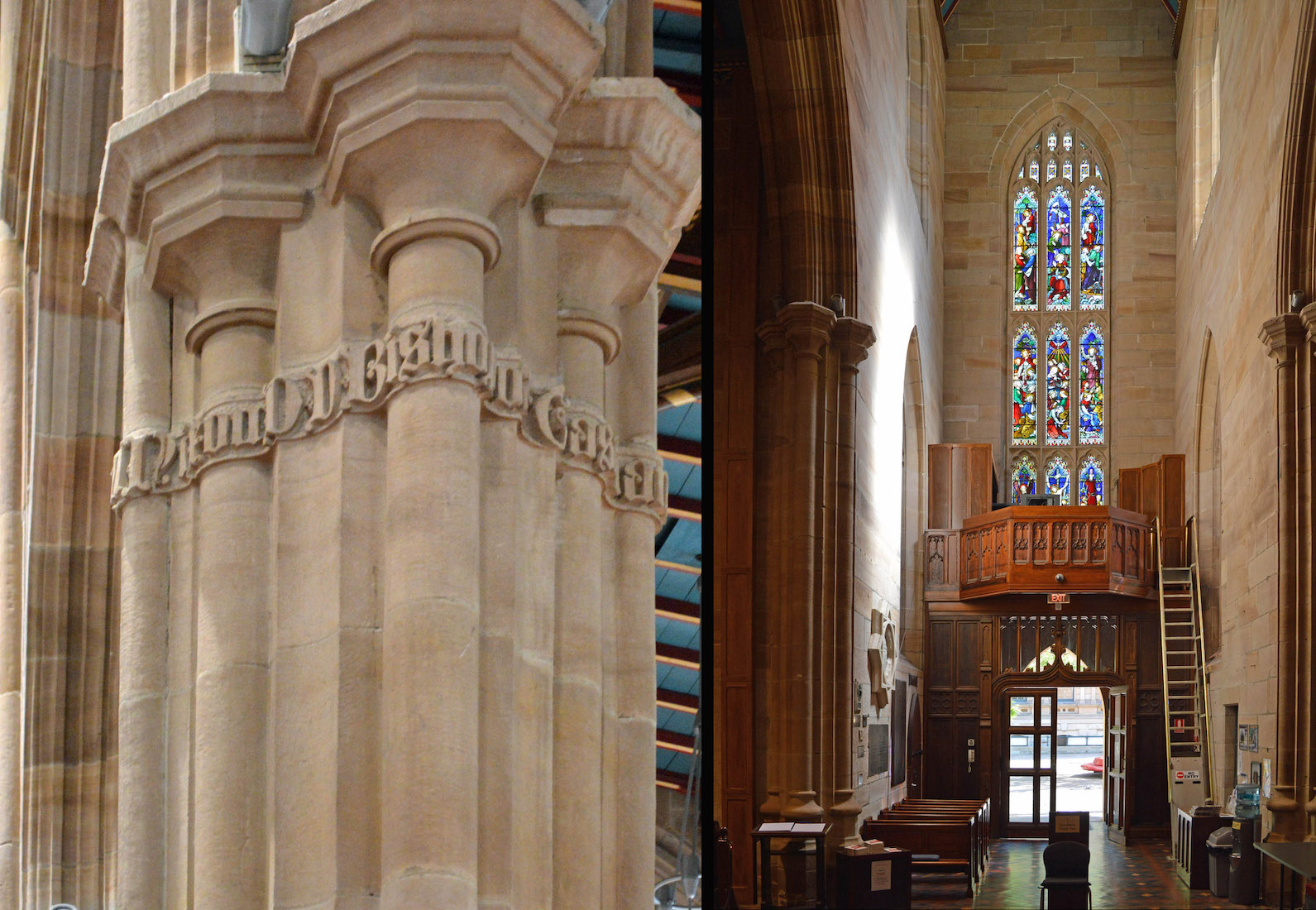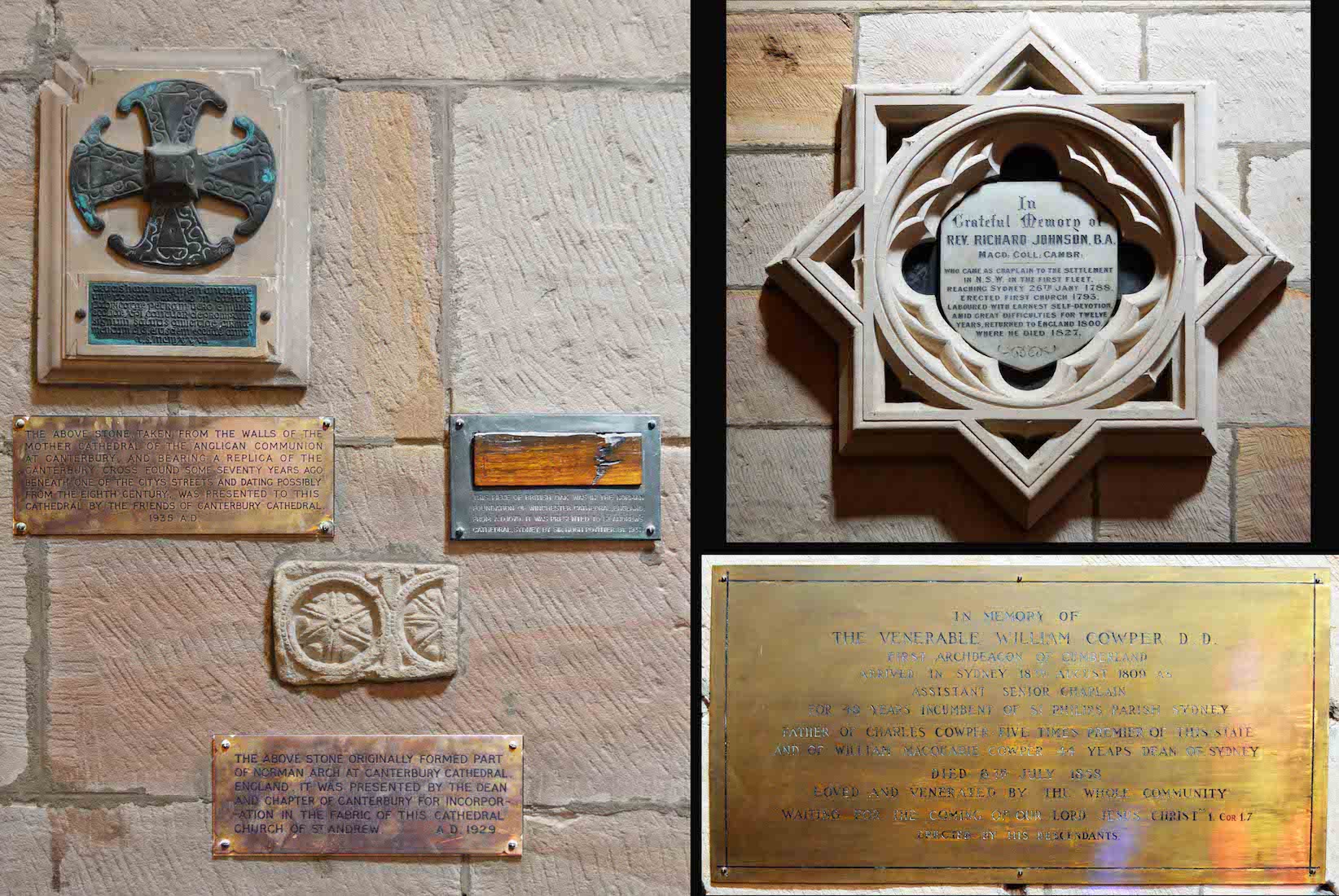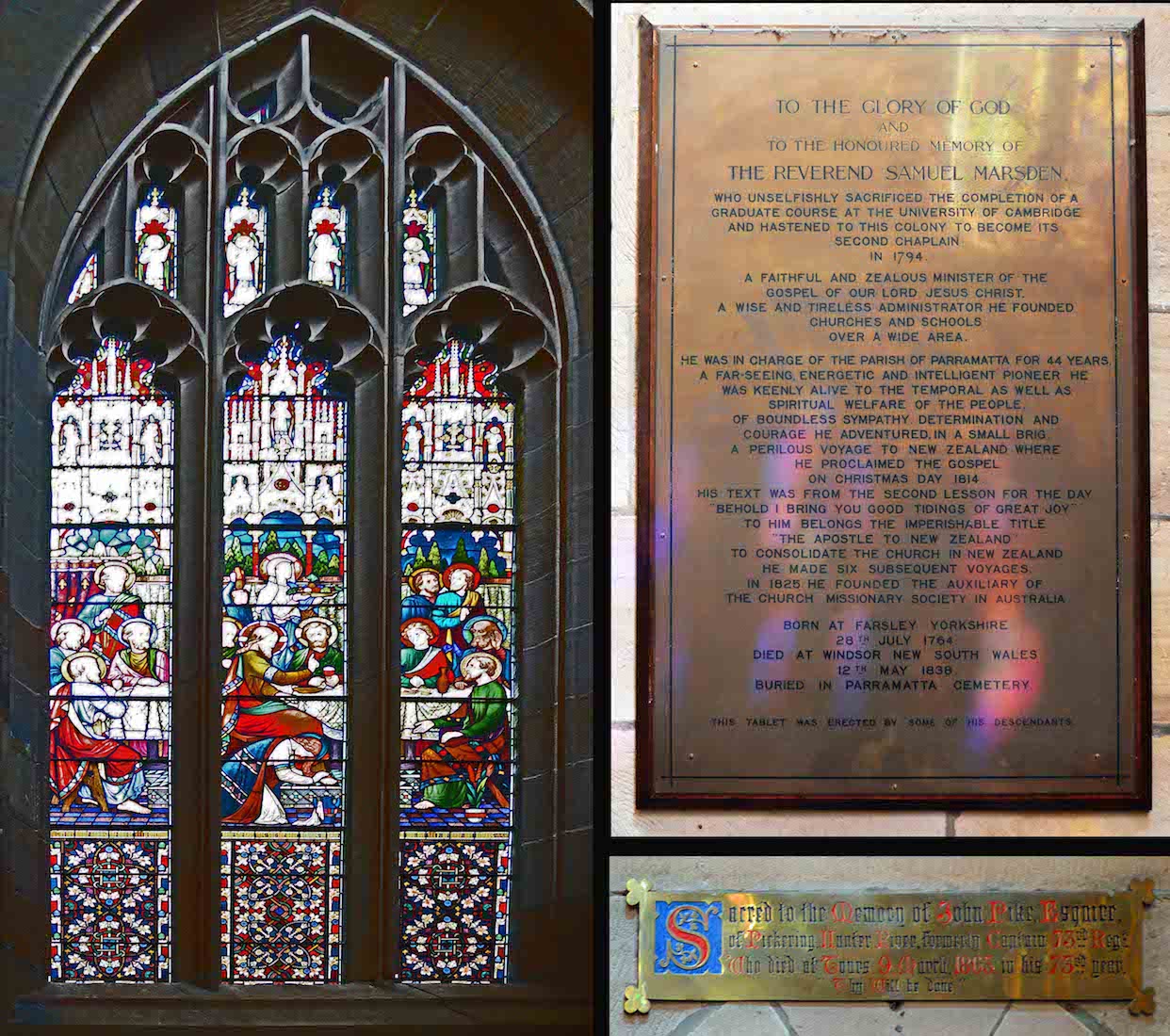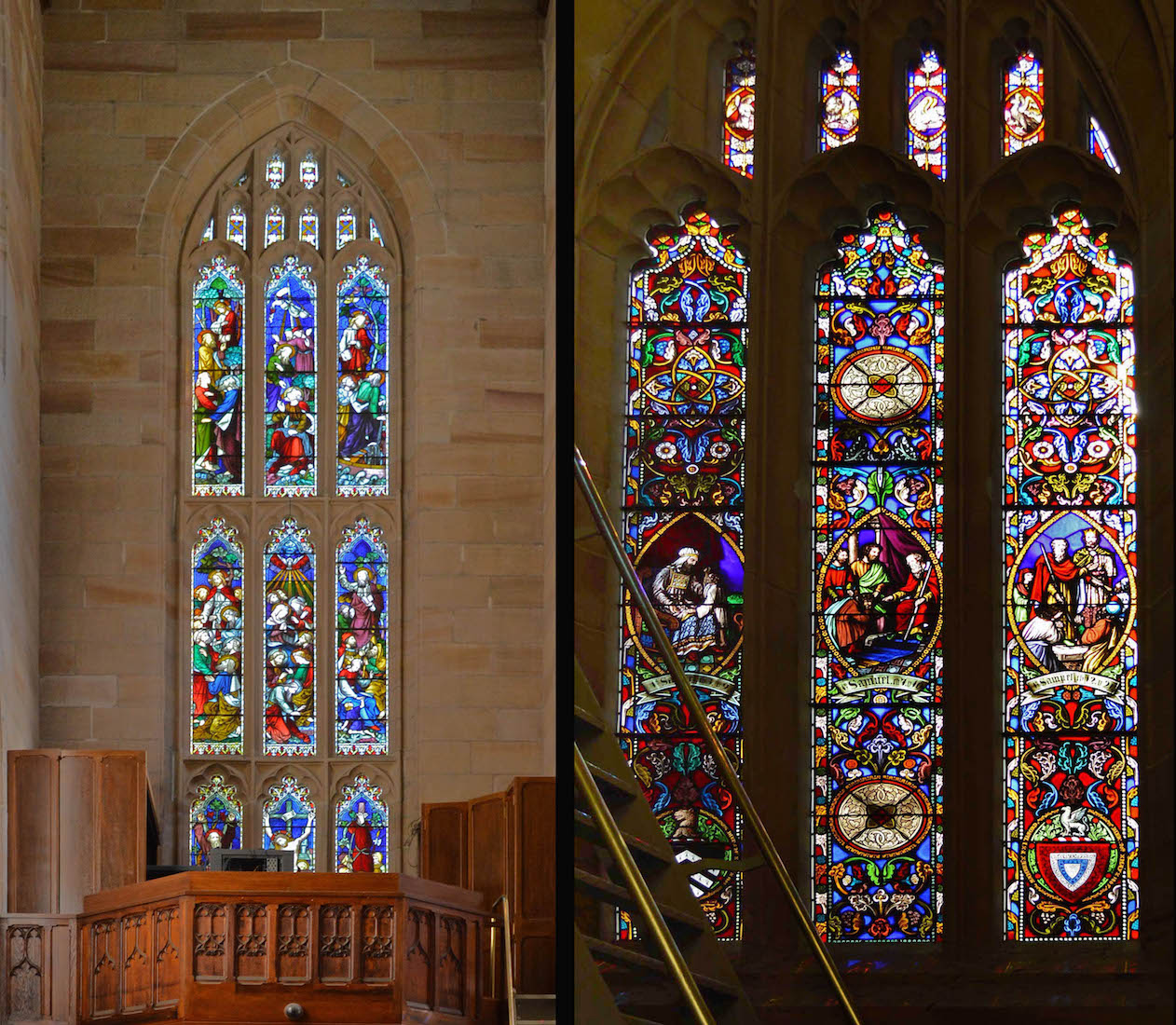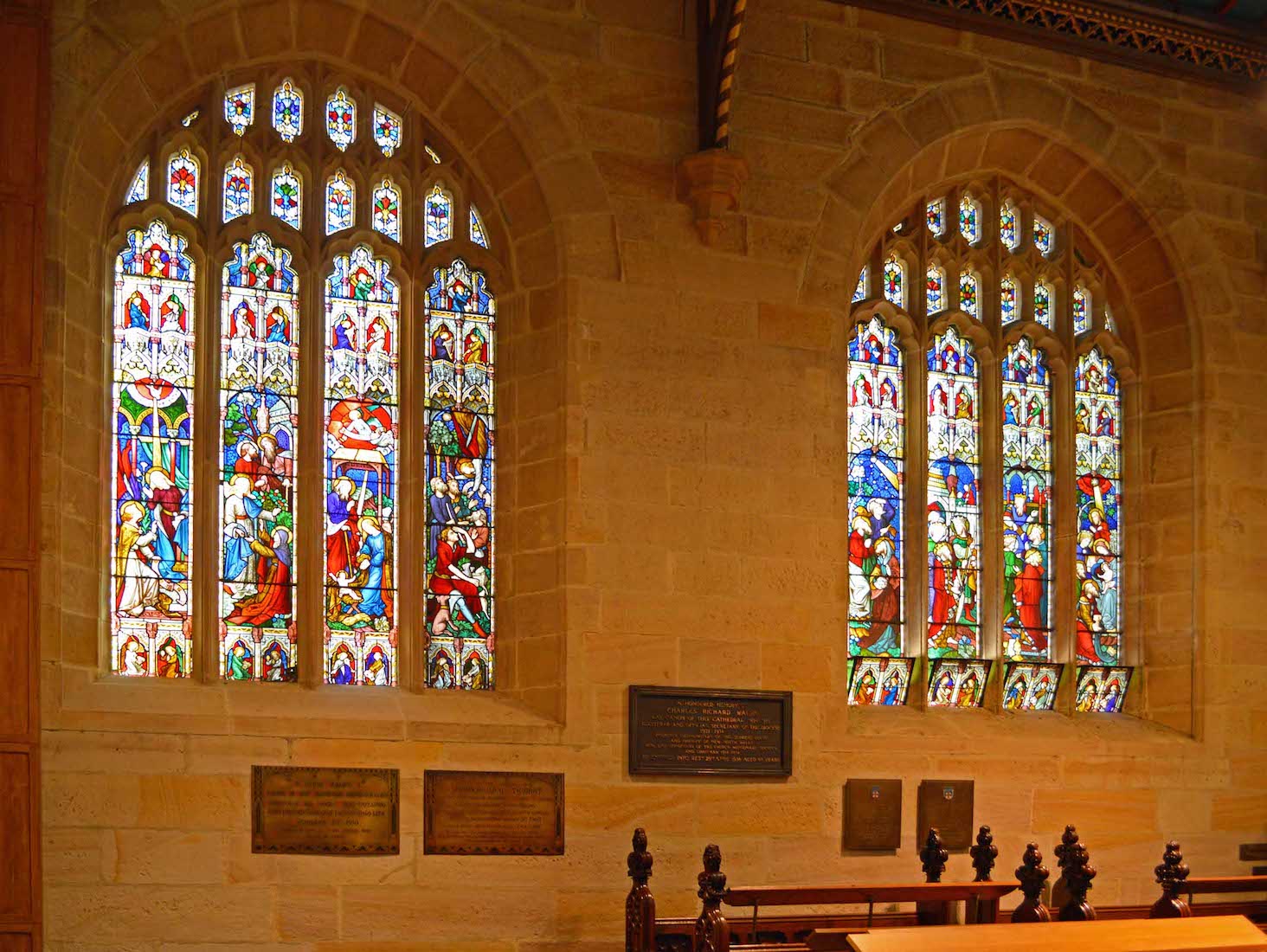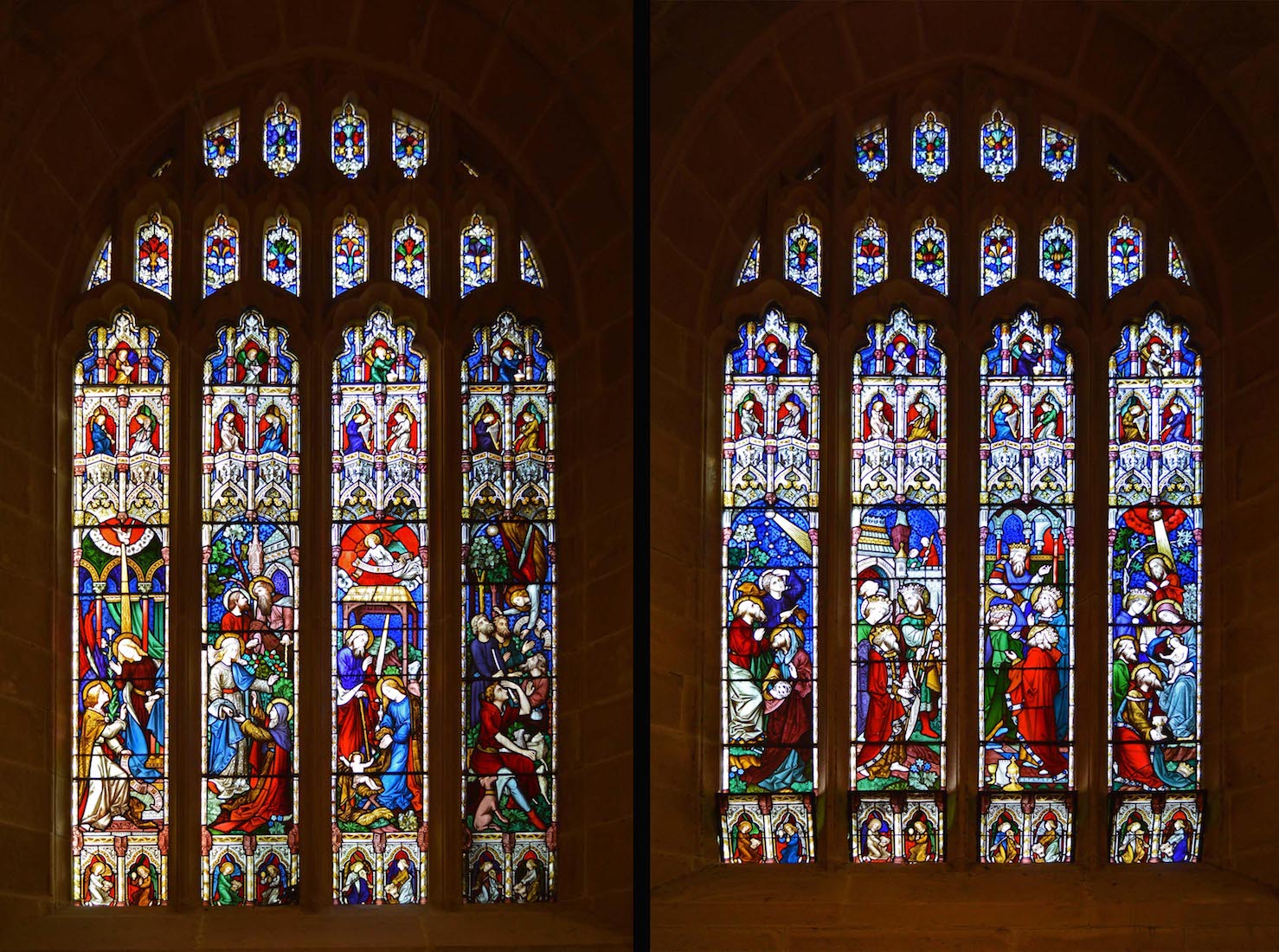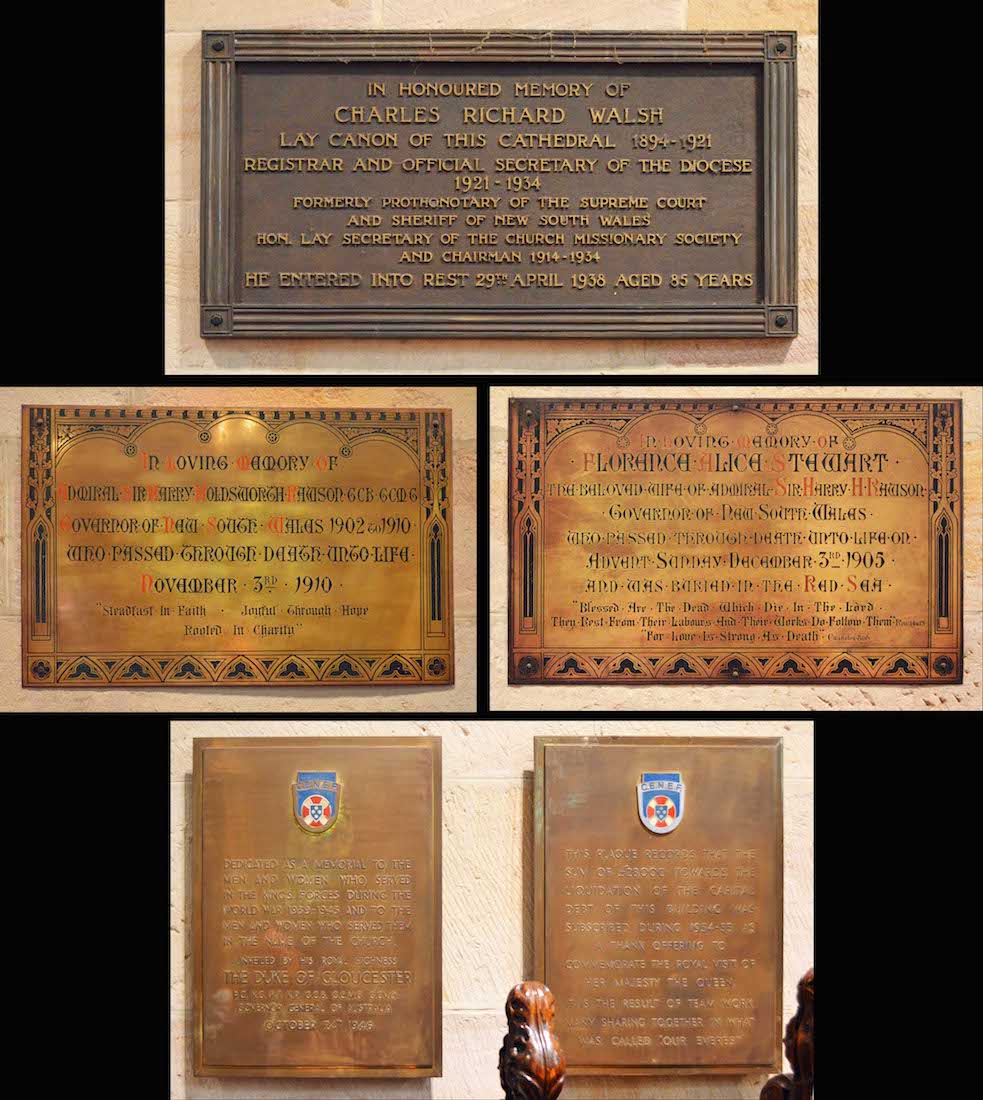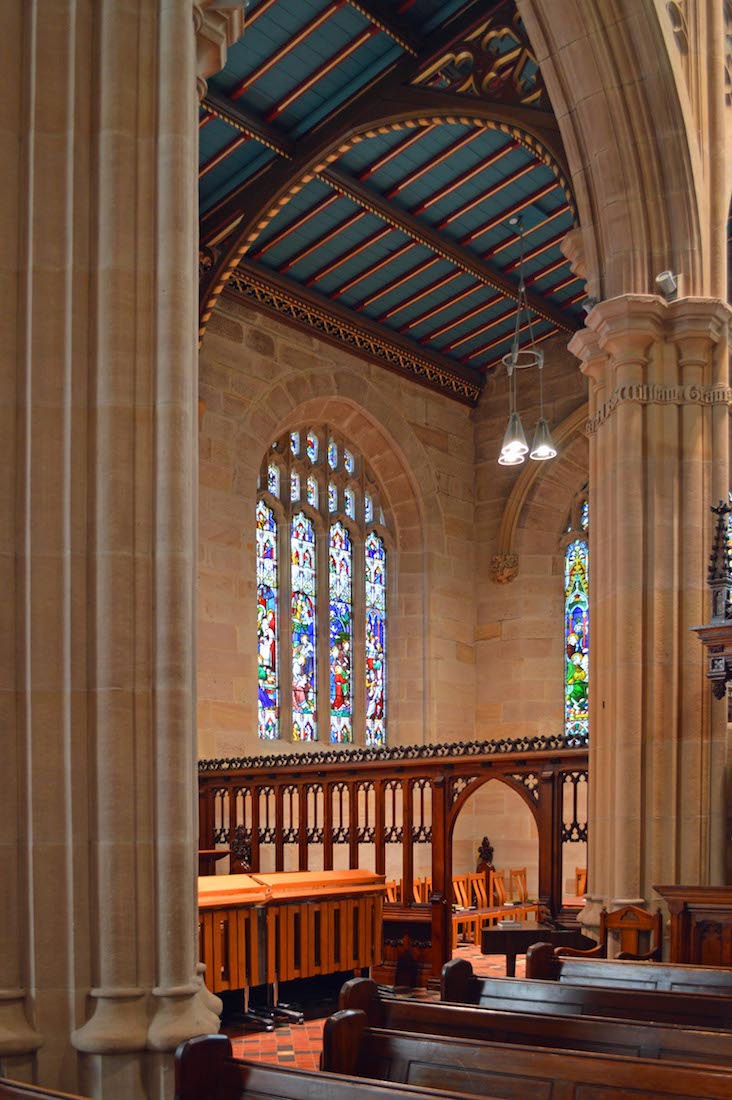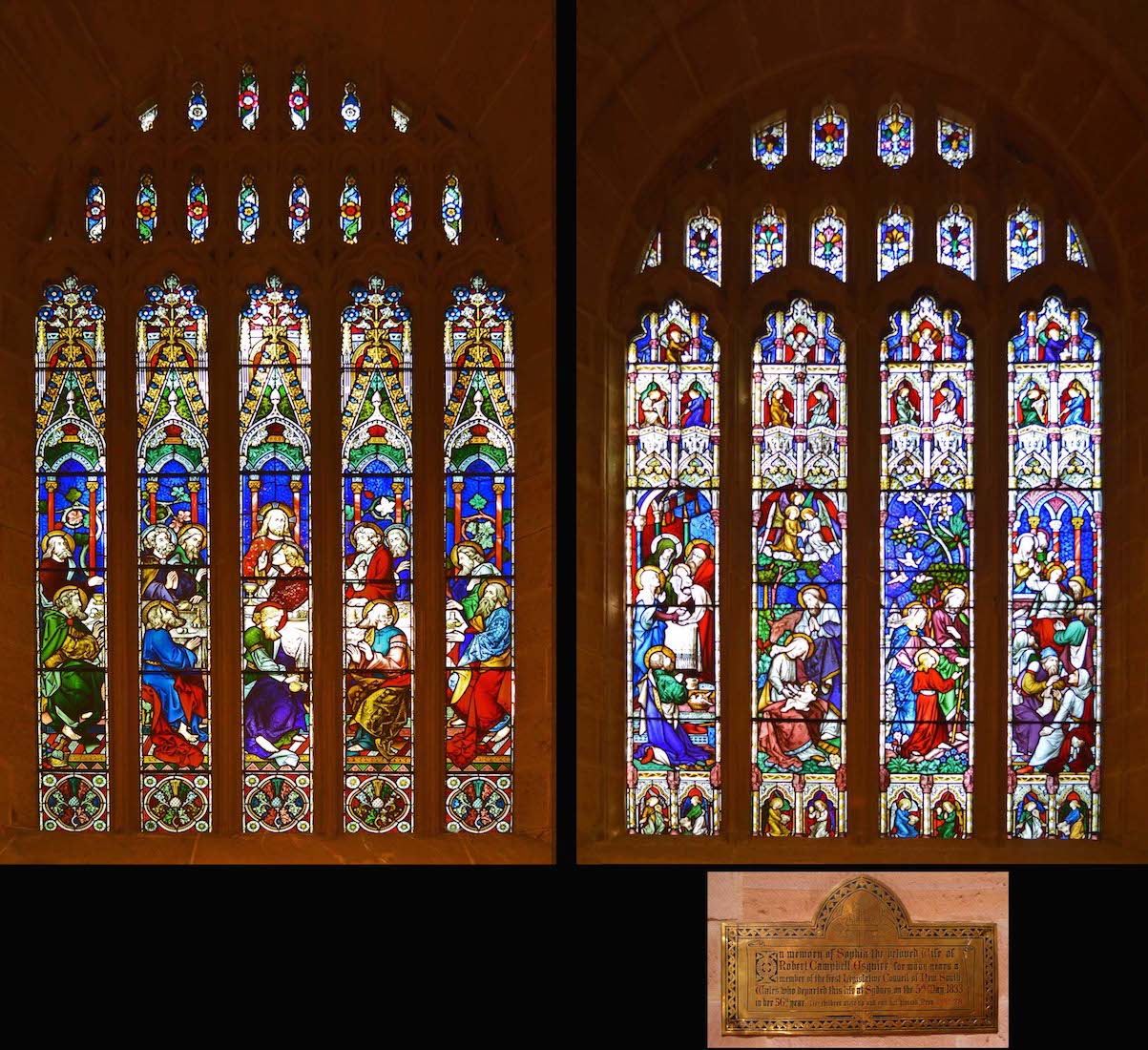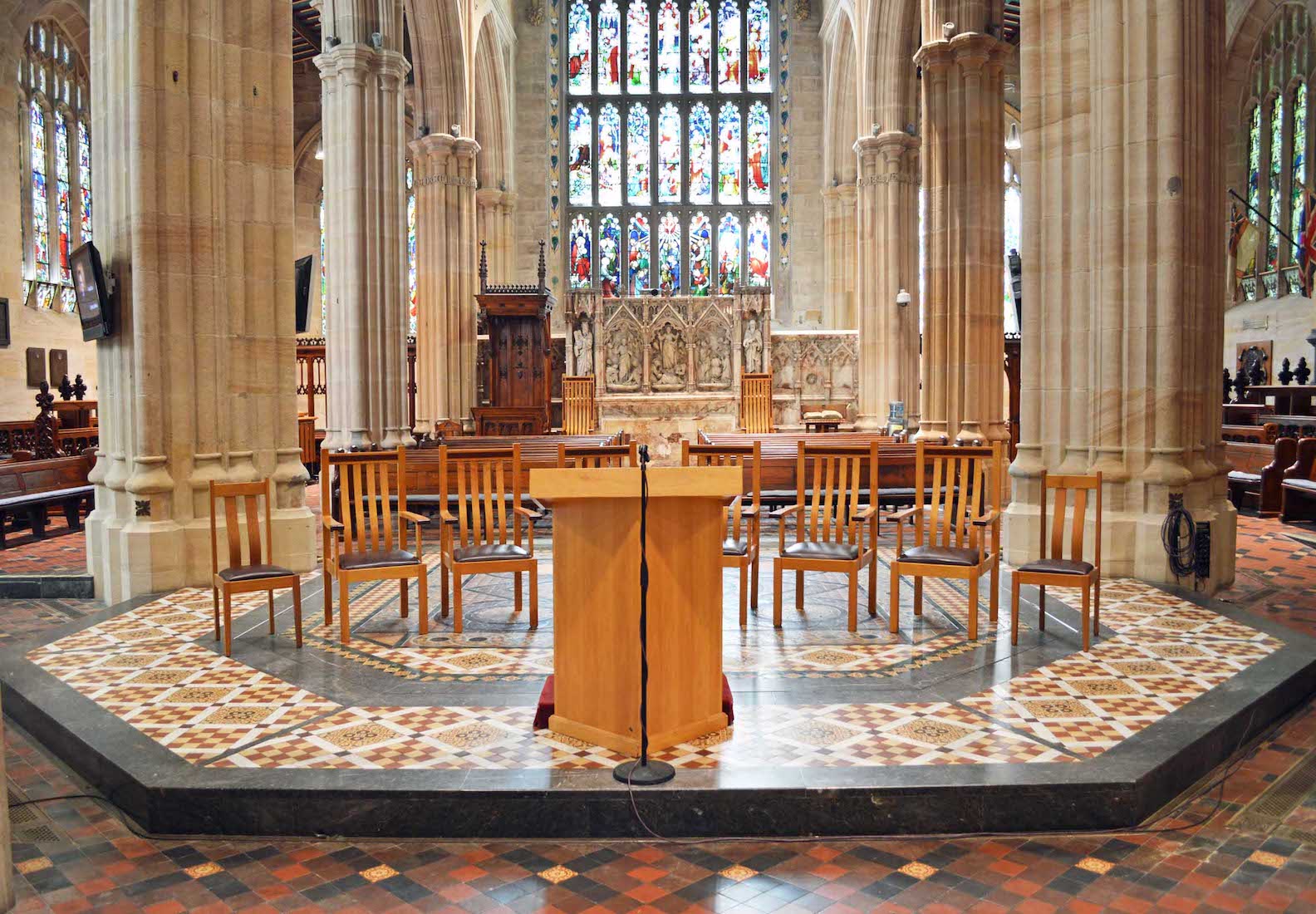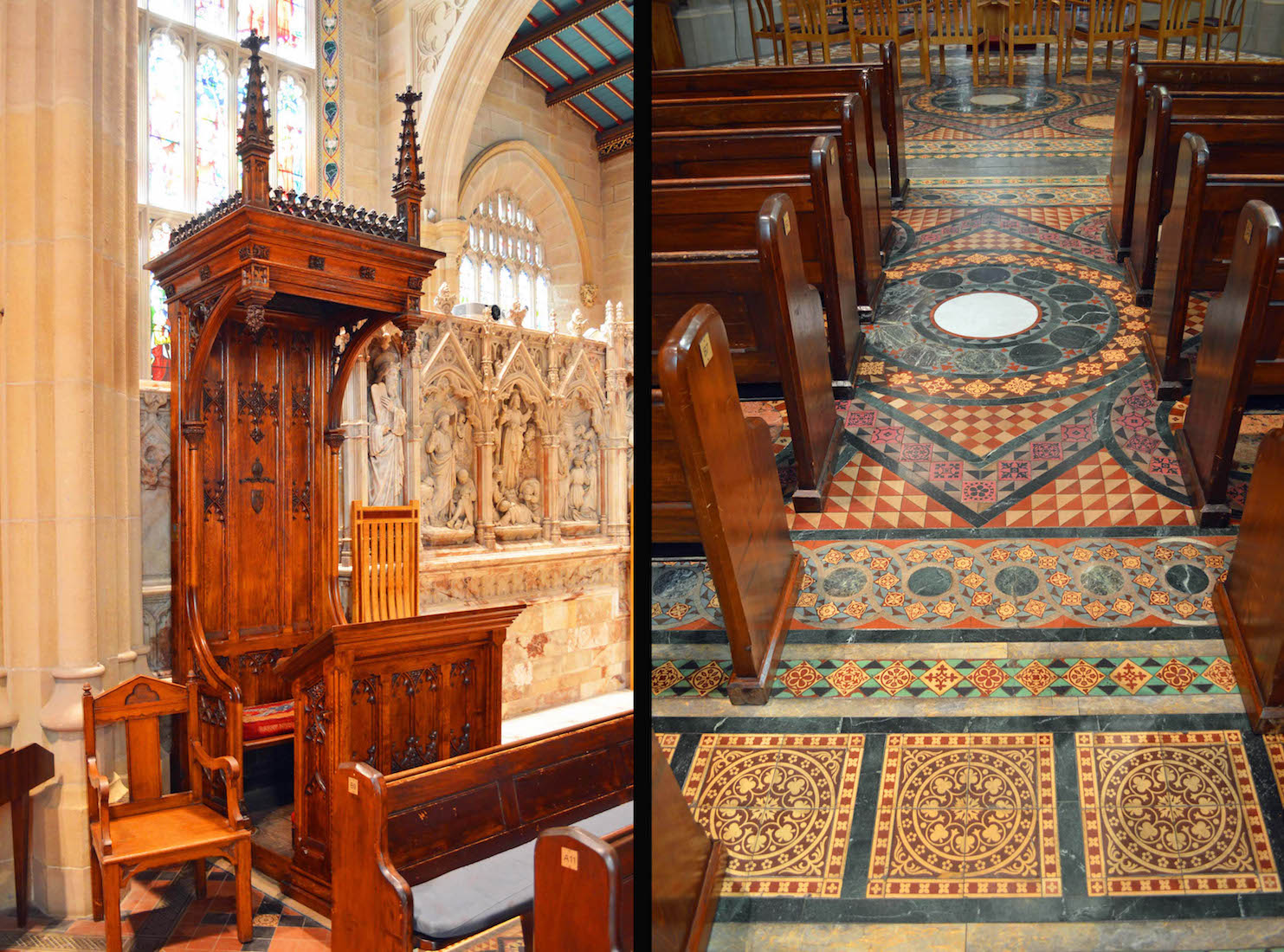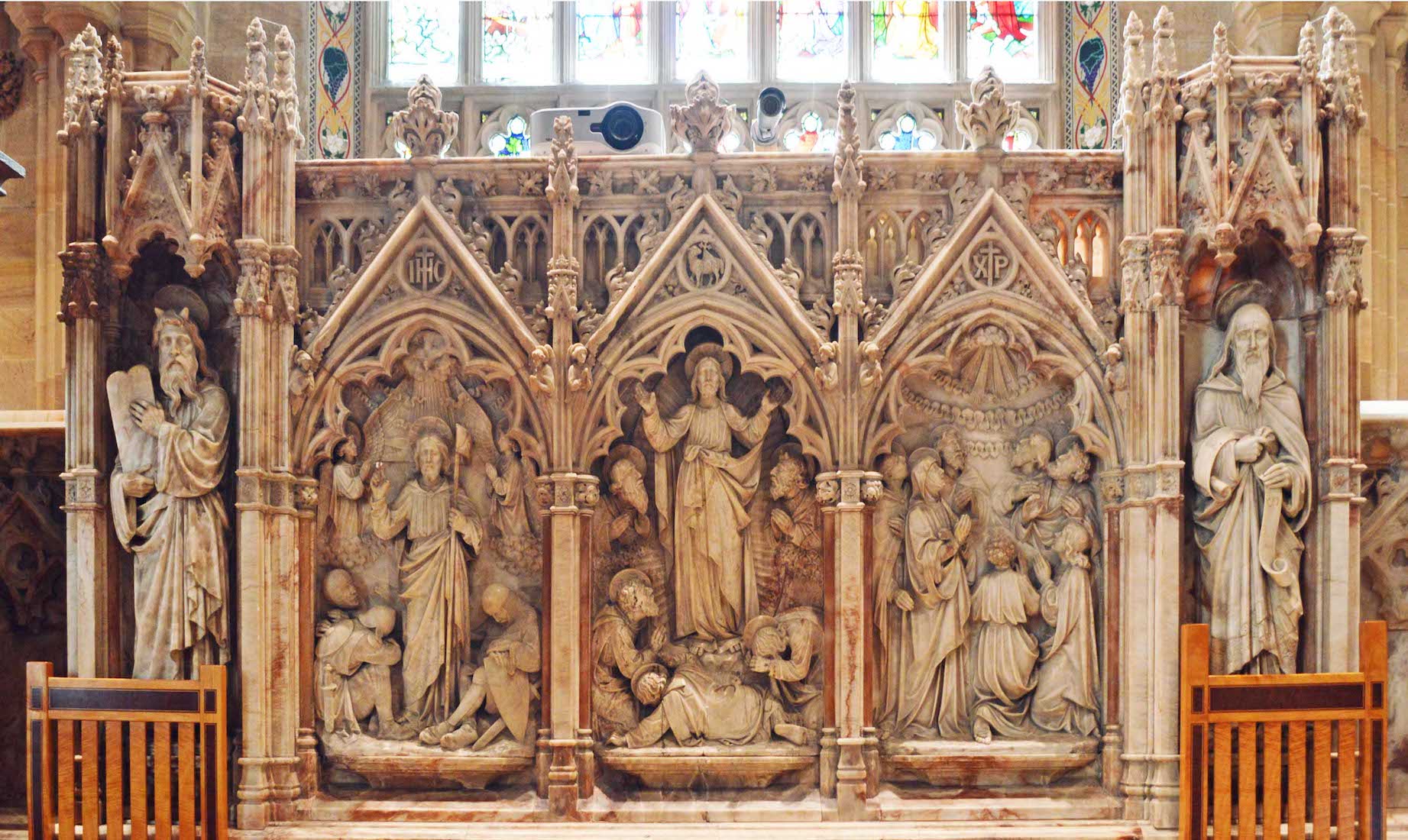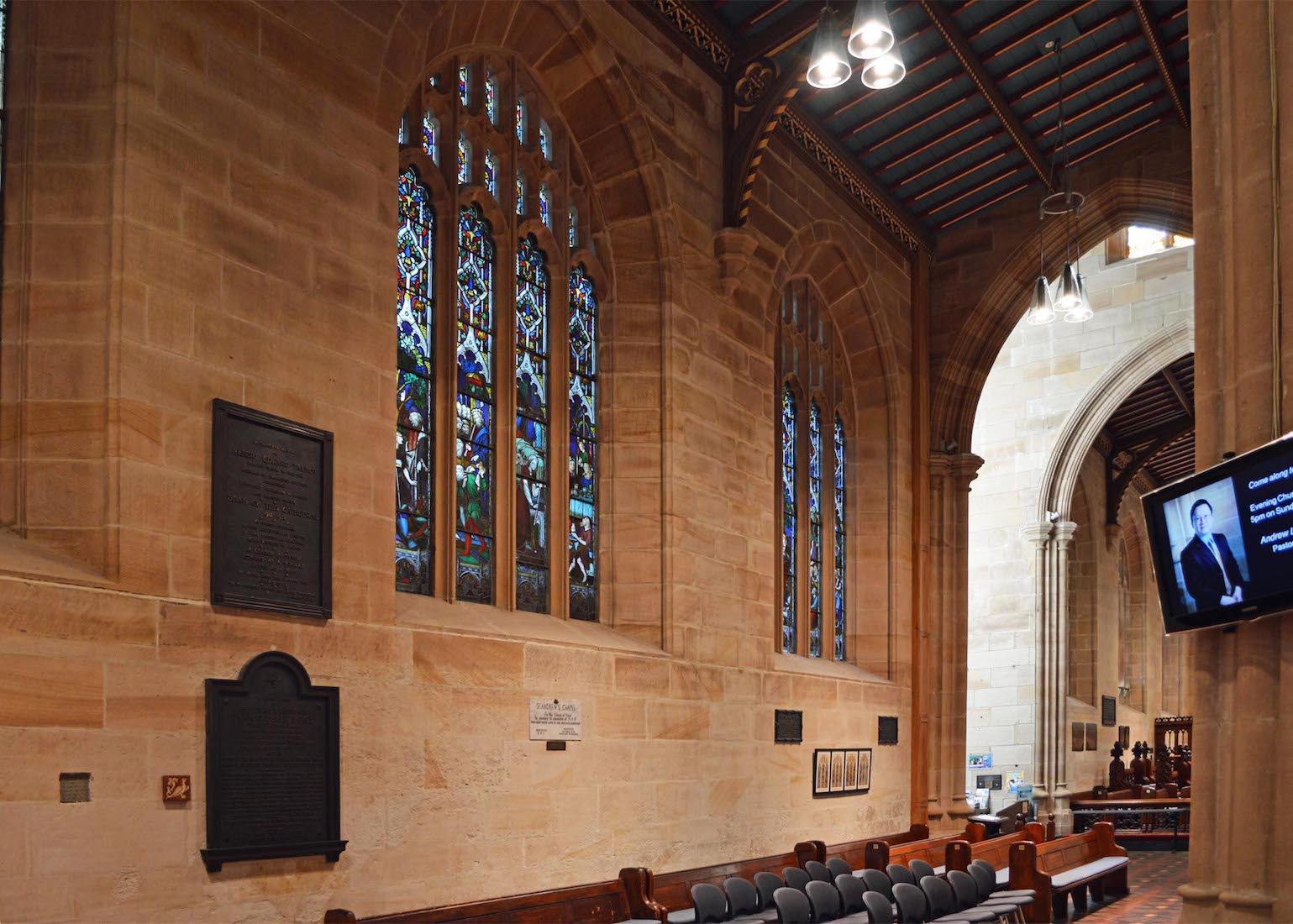
Our exploration along the North nave wall continues with two more windows and various plaques. The North transept then separates nave and chancel. PLAN
22. NORTH NAVE PLAQUES
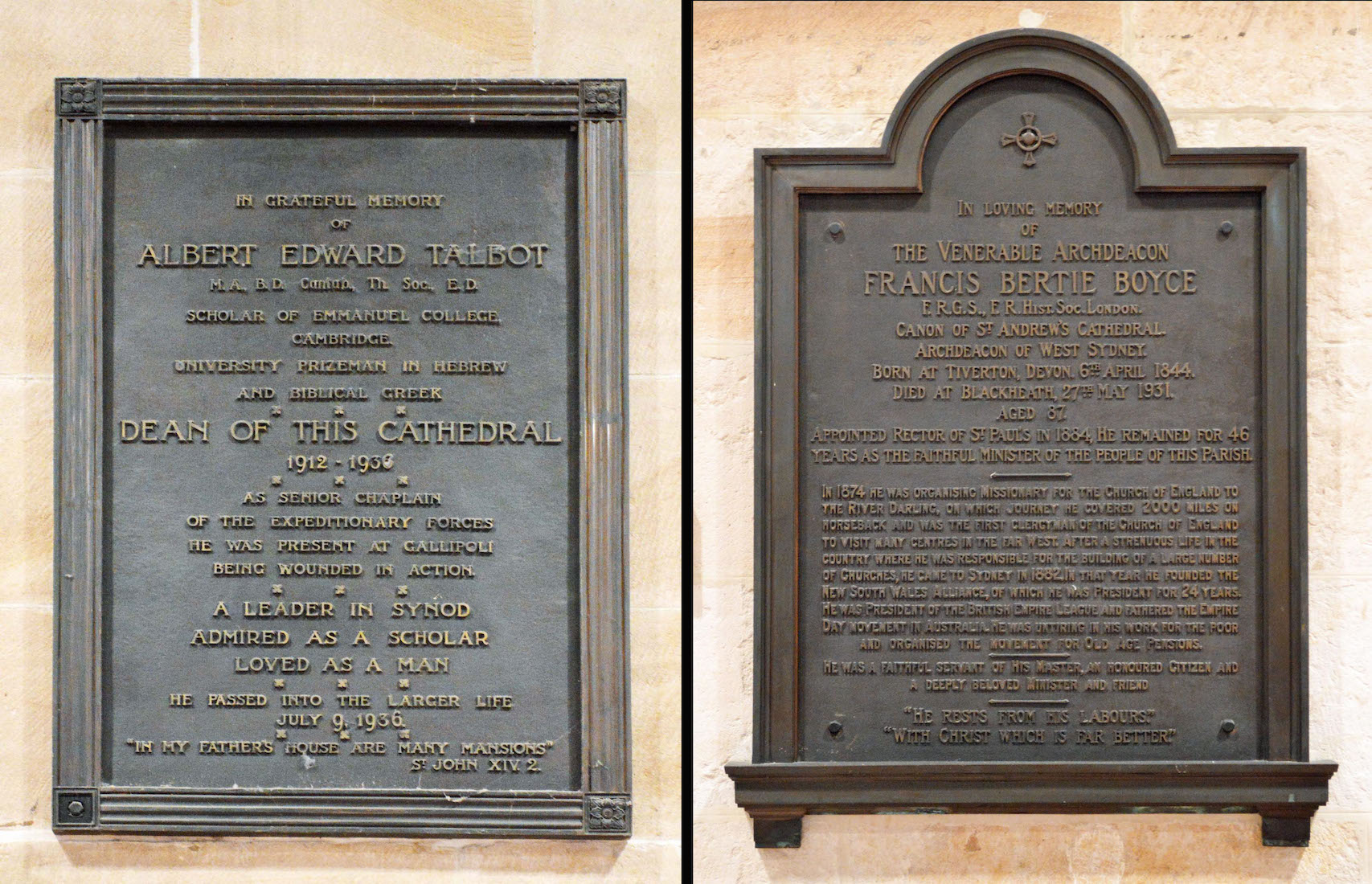
The first plaque gives further acknowledgement to the life and service of Albert Edward Talbot, Dean of this Cathedral 1912 – 1936. A similar plaque remembers Francis Bertie Boyce, 1844 – 1931, Canon of St Andrew’s Cathedral and Archdeacon of West Sydney.
23. NORTH NAVE PLAQUES
Then we read: St Andrew’s Chapel. In memory of members of A.I.F who gave their lives in the Malay Campaign. Dedicated 24th May 1942. The brass plaque explains: This stone was brought from Changi POW Camp Malaya by the Reverend M.K. Jones, Senior Chaplain to the Eighth Australian Division, Sometime Precentor of this Cathedral, and was unveiled on Anzac Day 1949.
24. NORTH WINDOW 4
This continues the series of windows with the parables as their theme. Pictured here from the left are: • the barren fig tree (Luke 13:6 – 9) , • the ten talents (Matthew 25:14 – 30), • the lost coin (Luke 15:8 – 10) , and • a rich man and Lazaras (Luke 16:19 – 31). The style of these ‘parable’ windows seems to be an imitation of medieval miniatures: painted illustrations in illuminated manuscripts of 1300 onwards. Figures are grouped in such a way that an entire story can be read from their gestures.
25. NORTH NAVE PLAQUES
The plaques commemorate the lives of John Stafford Needham, 1875 – 1942, Priest and Missionary to the Aborigines, Hon Canon of this Cathedral, and Anna E. Pallister, Head Deaconess 1913 – 1930.
26. CLERESTORY STRIP
The strip is a guide to the clerestory windows high on the opposite South wall. From left, Windows N, M: The Melanesian Mission with Bishop Patterson on Norfolk Island; A missionary and bush scouts meet Aborigines. Windows L, K: The Rev Samuel Marsden preaches to the Maoris on Christmas Day 1814; The Revd Richard Johnson conducts the first church service in the colony, in the presence of Governor Phillip.
27. NORTH WINDOW 5
We come now to the final ‘parables’ window. The four parables illustrated here are: • the lost sheep (Luke 15:1 – 7) • the good shepherd (John 10:1 – 6) • the two sons (Matthew 21:28 – 32), and • the wicked husbandmen (Luke 20: 9 –19 ). Stained glass windows played an important role in past centuries when the average member of a congregation was unable to read. Every picture tells a story!
28. PULPIT
As we come to the crossing where nave and transepts meet, we turn to observe this marvellous pulpit. It is elaborately carved and set on an octagonal marble base. The base contains the well known IHS inscription (the first letters of the name ‘Jesus’ in Latinized Greek). The pulpit was a gift pf Robert Towns MLC, a wealthy member of St Andrew’s in the mid-19th century. The city of Townsville, Queensland was named after him for his significant contributions to Sydney’s political life as well as his generous donations to worthy causes.
29. COLUMN ENGRAVING, NORTH TRANSEPT
The columns in the nave have carved stone ribbons near the capitals, bearing the names of notables in the early Sydney church. Standing in the crossing we can look along the North transept to admire its beautiful end window, rising above the narrow balcony. At an earlier stage in the Cathedral’s history, this balcony housed an organ, accessed by the ladder. We also note the two side windows, as well as this Northern entry to the Cathedral. More immediately, there is a collection of plaques on the West wall.
30. TRANSEPT STONES, PLAQUES
The top right plaque remembers Rev Richard Johnson who came as Chaplain to the settlement in NSW in 1788 and erected the first church in 1793. The brass plaque is in memory of William Cowper who arrived in Sydney in 1809 as Assistant Senior Chaplain. He was father of Charles Cowper, five times Premier of NSW. The Canterbury Cross (top left) was a gift to the Cathedral in 1935 and is mounted on a piece of stone from Canterbury. The white decorated stone below was part of a Norman arch at Canterbury Cathedral presented in 1929. The piece of timber is British oak from the Norman foundation of Winchester Cathedral, presented in 1937.
31. TRANSEPT NORTH WINDOW, PLAQUES
The West window of the North transept pictures the supper at Bethany. It is in memory of John Pike Esquire of Pickering, Hunter River, formerly Captain 73rd Regt who died at Tours 9 March 1863 in his 73rd year. The window is the work of Lavers and Barraud of London, dating from ca 1868. The plaque at right remembers Rev Samuel Marsden, 1764 – 1838, who became second chaplain to the NSW colony in 1794, and was in charge of the Parish of Parramatta for 44 years. He proclaimed the Gospel in New Zealand on Christmas Day 1814, and was given the title ‘Apostle to New Zealand’.
32. TRANSEPT WINDOWS NORTH, EAST
The tall window of three lights in three tiers in the North transept arrived in 1866. It illustrates the life of St Andrew. It was part of a collection of 21 large windows made by John Hardman and Co. of Birmingham made from 1861 onwards. Broadly the tiers of the window depict: Andrew’s early life, ministry, and death. The East window of the North transept is slightly obscured by the stair to the balcony. This detailed window shows scenes from the life of Samuel, and was made by Clutterbuck of Stratford.
34. CHANCEL NORTH WINDOWS
The three windows on this wall of the Chancel depict scenes from the early life and times of Jesus. The four scenes at left are: • The Annunciation • Mary visits Elizabeth • The birth of Jesus, and • The story of the shepherds. The second window shows • The star in the east • The wise men • The visit to Herod, and • The wise men worship. All these are part of the account given in Matthew 2:1 – 12.
35. CHANCEL PLAQUES
The top plaque is in memory of Charles Richard Walsh, Lay Canon of St Andrew’s 1894 – 1921, and Registrar and Official Secretary of the Diocese 1921 – 1934. The top brass plaques commemorate the lives of Admiral Sir Harry Holdsworth Rawson and his wife Florence Alice Stewart Rawson (née Shaw). Sir Harry was Governor of NSW from 1902 to 1910, and died in 1910. The bottom plaques remember the men and women who served in the King’s forces during the World War 1939 – 1945, and the £28,000 subscribed during 1954 – 1955 towards the liquidation of the capital debt on St Andrew’s.
36. NORTHEAST CHANCEL
The East end of the chancel is divided into three distinct areas, with the central area serving as a porch for the East entryway. The resulting North East corner of the chancel could easily be a little chapel. It contains a further two large windows.
37. CHANCEL NORTHEAST WINDOWS
The North window at left continues the theme of the early days of the life of Jesus. We see here (from left to right): • Jesus being presented in the Temple • Escape to Egypt • The visit to Jerusalem • Jesus teaching in the Temple. The right window begins an entirely new theme, dealing with the last days in the life of Jesus, starting here with the Lord’s Supper. Jesus sits at table with his twelve disciples. The depiction of the upper room is very fancy! The plaque below the window presumably refers to the window itself (there is a pairing plaque on the South side).
38. CHANCEL
At this point we step back to the crossing with this slightly raised octagonal platform which is the central focus of worship in this Cathedral. For example, this area can be used for presentations and musical performances. It is also the setting for the Lord’s Supper for a communion service. In line with the trend in the Diocese of Sydney for services of a more contemporary nature, and to avoid any potential confusion of the communion table with an altar, it was decided that the communion table should be placed in this more forward position in the chancel and that it should be easily portable in order that it might be removed when not in use.
39. CATHEDRA, CHANCEL TILING
Standing near the East wall and adjacent to the reredos, is the Bishop’s throne, or cathedra. St Andrew’s is the Cathedral for the Anglican Diocese of Sydney, and in fact, the siting of the cathedra here, gives it the name ‘cathedral’. The cathedra is quite ornate, but I have no information about its history. The chancel also has some beautiful tiles and marble floors, mostly still the original and laid between 1862 to 1868. These were relaid and repolished during the Cathedral’s refurbishment in 1999 – 2000. The Cathedral floor was designed by G G Scott Esq of London.
40. REREDOS
The ornately carved reredos stands some distance forward from the great East window, with the East entry area between. The reredos was carved of translucent cream English alabaster by the sculptor Thomas Earp in 1886. Originally the three main panels showed the Resurrection, the Crucifixion, and the Ascension. To either side were the figures of Moses and Elijah. In 1887 there was objection at synod to the central Crucifixion on the grounds that it might be seen as idolatrous. The Crucifixion was replaced by the present scene of the Transfiguration. Both depictions of Moses show him with horns, a symbolic attribute due to a mistranslation in the Vulgate Bible.


